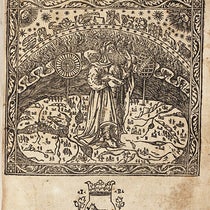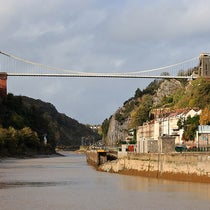Scientist of the Day - Fleeming Jenkin
Henry Charles Fleeming Jenkin, an English engineer, was born Mar. 25, 1833, in Kent. Jenkin came of age at a time when electricity was drastically changing the field of engineering. In the 1840s, telegraphy was invented, which expanded in the 1850s to include submarine telegraphy. The new field of electromagnetism was also giving rise to a technology that made more and more use of electric motors and dynamos. Jenkin started working on the laying of underwater telegraph cables in 1856, mostly across the Mediterranean. In 1859, he met William Thomson (later Lord Kelvin), who was the electrical engineer on the 1858 transatlantic cable enterprise (this one failed) and also for the 1865-66 undertaking (which was successful). Thomson was quite impressed with young Jenkin’s intelligence and ingenuity, and the two collaborated extensively on subsequent cable-laying, a collaboration that lasted well into the 1870s.
Jenkin's talent was also recognized by others; he was appointed Professor of Engineering at University College, London, in 1866, and in 1868, he was invited to become the first Regius Professor of Engineering at the University of Edinburgh. Jenkin's gladly accepted that appointment, for it brought him much closer to his colleague Thomson, who was Professor of Natural Philosophy at nearby Glasgow University.
One of Jenkin's most ingenious feats of engineering came later, in the 1880s, when he invented the first telpherage system. Telpherage (a word coined by Jenkin) is a method of conveyance, using an overhead electrical cable, whereby an electric motor (a locomotive, if you will) hanging from the cable propels itself along, bringing with it a train of cars or skips loaded with whatever one needs to move from one place to another. The world now has many tramways and gondola systems, but this was the first, and it differed from its successors in that the suspension line was also the power line.
The first operational telpherage system was constructed in 1884-855 at Glynde in Sussex, and it carried clay from an open pit mine to a railway station about a mile away. One train, consisting of a motor and 10 skips, could carry about 2000 pounds of clay, and it essentially ran itself, doing away with the need for horses, carts, and their handlers. Popular Science Monthly ran a story in 1890 on the Glynde telpherage system, including a number of wood engravings, three of which we show here. One shows a train of ten skips on its way from the mine (second image); another depicts the railway siding where the skips ended their trip by automatically dumping their load into the railway hopper cars (third image, above). A third is an inset, here enlarged, that shows the motor, which hangs and draws power from the overhead line (fourth image, below). What looks like a cable in the first two wood engravings is actually a succession of iron rods, which works better than a cable because the rods can be insulated from one another, allowing one to be positive and the next negative. The electricity was generated by a dynamo at the mine, powered by a steam engine that itself ran on waterpower.
Jenkin made another important contribution to an entirely different field, which was uncommon, even in the 19th century, as specialization in science had already set in. The field was the reception of Charles Darwin's theory of evolution by natural selection. In 1867, Jenkin wrote an anonymous review for the North British Review of Charles Darwin's Origin of Species, in which he raised what is called the "blending problem." How, Jenkin asked, does a favorable variation (a key element of Darwin's evolutionary theory) persist in nature, without being blended back into the population and disappearing? Many criticisms of Darwin's theory had been voiced between 1859 and 1867, and Darwin dealt easily with all of them, but this one he could not answer, and it bothered him to the end of his life. Neither Darwin nor Jenkin was aware that the problem had already been solved, by Gregor Mendel, with his proposal of discrete genes that do not blend. Mendel's papers of 1865 remained unnoticed for decades, until they were rediscovered in 1900, and the blending problem was resolved. Darwin, interestingly, did not know the identity of his critic, since scholarly reviews were customarily published anonymously, and Darwin asked one of his correspondents, Charles Kingsley (author of The Water Babies), if he knew the identity of his gadfly. Kingsley never responded to the query, so whether Darwin ever learned that Jenkin had written the review, I do not know.
Jenkin had a wide range of interests; he was fond of literature, both contemporary and classical, and read widely; he was apparently quite a talented artist (although I have not seen any of his artwork); and he loved acting. While at Edinburgh, he and his wife Anne would stage plays in their home, with students and friends as cast and crew. One participant at these thespian happenings was Robert Louis Stephenson, who recalled that these evenings with the Jenkins were his sole good memories from what was otherwise for him a dreary Edinburgh experience.
Jenkin never got to see his telpherage system in operation, for he developed an infection after a minor operation in 1884 and died. He was only 52 years old. Stephenson was much saddened by the demise of Jenkin, and he wrote a Memoir of Jenkin in 1888, in which he lamented the loss of his favorite Edinburgh professor. You can read the Memoir at this link, reproducing its first separate publication in 1912; it includes as frontispiece a photograph of the older Jenkins, the one Stephenson knew.
Jenkin was buried in St. Mary the Virgin Churchyard, Stowting, Kent, where his parents were laid to rest. His tombstone has suffered from English weather, so that the letter “F” of his middle name has almost eroded away. So if look up his grave on findagrave.com, you must look under Henry Charles Leeming Jenkin. It took me quite some time to figure this out. I will spare you the trouble and show you the grave and tombstone just above.
The portrait of Jenkin above (first image) was sketched by William Brassey Hole in 1884. It is rich in Jenkin associations; the telpherage system at the top is an obvious one, but it also shows a set of Daniell cells, the new improved battery that was used to power the submarine telegraph cables and which Jenkin was adept at constructing. You can also see, at the back, a sewage stack. Jenkin was interested in sanitation engineering and made important contributions to the design of sewage systems. The drawing is in the National Portrait Gallery in London; if you click on the image, you should be taken to the NPG website, where you can enlarge the drawing and see many more details.
Dr. William B. Ashworth, Jr., Consultant for the History of Science, Linda Hall Library and Associate Professor emeritus, Department of History, University of Missouri-Kansas City. Comments or corrections are welcome; please direct to ashworthw@umkc.edu.

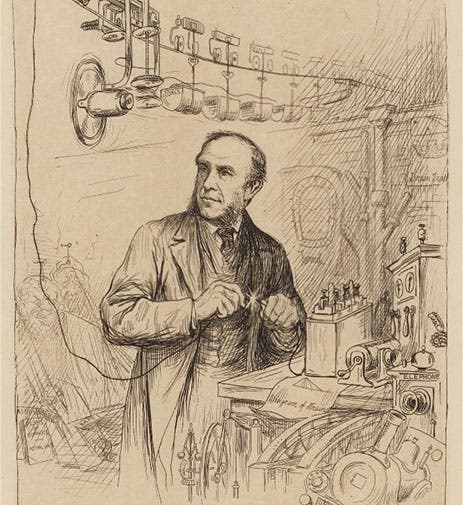


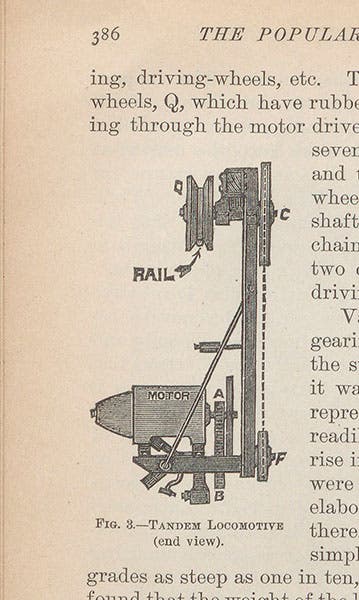


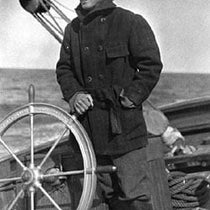
![Using an astrolabe to measure the depth of a well, woodcut in Elucidatio fabricae vsusq[ue] astrolabii, by Johannes Stöffler, 1513 (Linda Hall Library)](https://assets-us-01.kc-usercontent.com:443/9dd25524-761a-000d-d79f-86a5086d4774/a998eb50-55d2-4a88-ace2-a50aa5fa86e7/Stoffler%201.jpg?w=210&h=210&auto=format&fit=crop)
